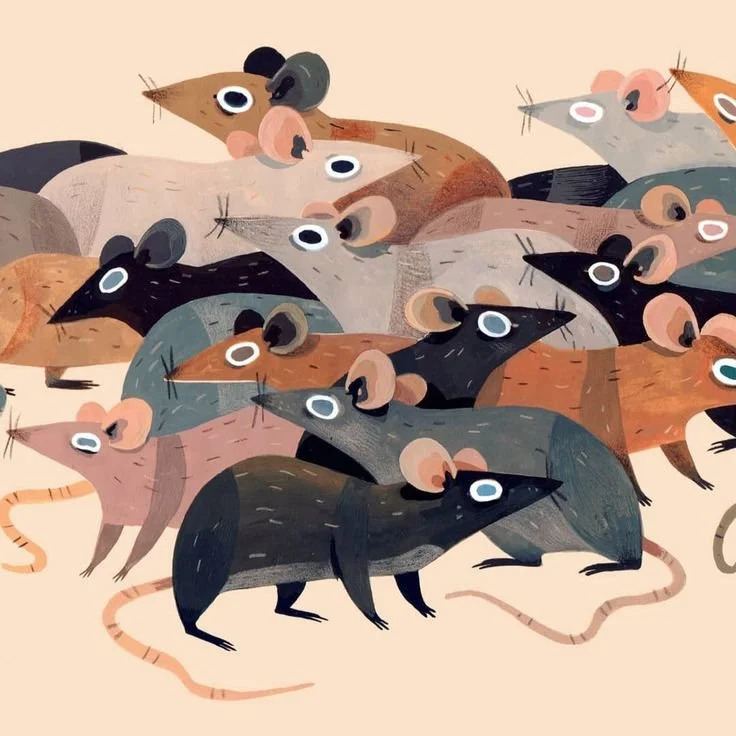Storytelling
This past winter, I picked up Jia Tolentino’s book of essays, Trick Mirror. A dive into the depths of the success and harm of the internet, the grief of the cultural landscape, and the impossibility of knowing yourself in the age of the technology. I spent the month of March obsessed with her conclusions. I carried the tattered book around in my purse everywhere I went, eager to pull out a passage at a party or bar, ready to share my findings.
Soon, I stumbled on an older article of hers, “My College Roomates Were Rats”. Surprised by the contextual difference between her book and this article, I found myself just as captivated by her work despite a lackluster conclusion. I got to thinking about narrative- the art of storytelling.
A boring story is nothing but boring storyteller. Almost everyone can be hooked by the most mundane plot if the speaker knows how to tell it. A good story is one that the audience deems as something they care about. It is not the event itself that allows for this sudden declaration, but how it is presented. The moment in which the audience switches from perceiving an event happening to the character to living in the memory just as they are recalling it is one that all storytellers work toward. However, it did not always come naturally. There is no one formula to providing a good story, and therefore storytelling, whether in film, art, writing, or performance, should always be judged on its ability to make the audience care. Just as a joke is only as good as its delivery, and as a memory is only as good as you can recall it- a story is only as good as its execution.
Tolentino’s article follows a short and sweet memory of her and her college roommates’ two-month long excursion with a rat infestation. Despite the seemingly minor scenario, Tolentino employers her dependable story telling approach in order to make the work sing off of the page. Boiled down to the core of it, I thought that this essay was barely worth being told. Tolentino, along with the other roommates, discover rats living in their apartment. She spends a few paragraphs reminiscing on a few quick memories she has of the rats over the next months, and then finally once they return back from their college’s winter break, the rats are gone. “My College Roommates Were Rats”’s seemingly weak tether to the classic narrative structure would normally categorize it as insignificant.
While the event of having to live with rats for a few months does have the potential to be used as an interesting anecdote in playful conversations, because of the lack of development, many questions emerge about how the piece works the way it does. At its basis, there is nothing strong enough to remark about. Therefore, why is this something to analyze? Why should audiences care about this? How is this story told in a way that makes it hold any meaning at all? While it is everything that is traditionally avoided in the narrative construction, this essay still efficiently functions as a good story for the audience because of the strategies Tolentino uses to stretch the account into something more digestible than its root foundation. This is when to care.
This essay works not because of the story itself. The foundation of the piece would have no life to it, if not for both the way Tolentino tells it, and the care that she puts into the recollection of the memory. Her hyper-specific details allow for the setup of the work and for the audience to have the space and capacity required to care about what happens next. This imagery is what takes the piece from an occurrence to a story. We know the characters beyond just this scenario, and therefore, we want to know how they will react. We are familiar with the setting and so the situation is more plausible and accessible to us. Her use of humor through ironic imagery and diction centers the amusing and charming nature of it as well. Tolentino moves beyond the story itself and becomes a storyteller. She skillfully makes us care about what we are interaction with, leaving us wanting to know what happens next as she brings to life an otherwise simple episode into something of substance and intrigue.
Jia Tolentio
Within my own work, I find the act of storytelling to always exist at the core of intention. Art lives as another’s perception, and the artist can only tell stories to communicate the vision. I wish I had more than a half-baked concept of the interconnection between storytelling and creation and presentation and art, but I fear that may take a few more years for me to fully understand. What I do have is an example of good storytelling. With everything I do- film, fashion, writing, craft- all I can hope is to tell a good story.



